 W
WAlfred-Ingemar Berndt was a German journalist, writer and close collaborator of Nazi Propaganda Minister Joseph Goebbels. Berndt wrote an eyewitness account of the 1940 German invasion of the Low Countries and France, Tanks Break Through!, and is regarded as propagandistic creator of the "Desert Fox" myth attached to the German Field Marshal Erwin Rommel.
 W
WJohannes Bobrowski was a German lyric poet, narrative writer, adaptor and essayist.
 W
WFranz Fühmann was a German writer who lived and worked in East Germany. He wrote in a variety of formats, including short stories, essays, screenplays and children's books. Influenced by Nazism in his youth, he later embraced socialism.
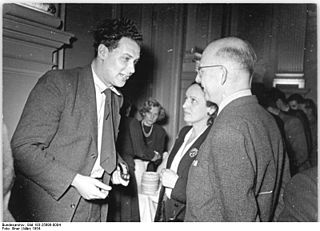 W
WGotthold Gloger was a German writer and painter.
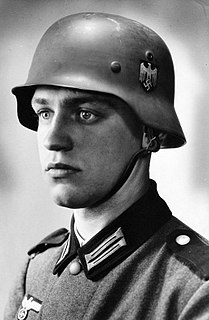 W
WWerner Goldberg was a German who was of half Jewish ancestry, or Mischling in Nazi terminology, who served briefly as a soldier during World War II. His image appeared in the Berliner Tageblatt as "The Ideal German Soldier", and was later used in recruitment posters for the Wehrmacht.
 W
WWilhelm Graf was a member of the White Rose resistance group in Nazi Germany. Followers of the Catholic Church in Germany regard Graf as a martyr. His beatification cause for sainthood is in progress.
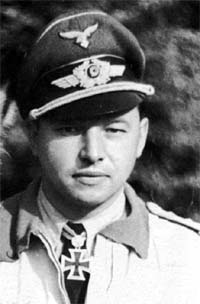 W
WHans Robert Fritz Hahn who was nicknamed "Assi" was a German Luftwaffe military aviator during World War II, a fighter ace credited with 108 enemy aircraft shot down in 560 combat missions. He claimed 66 victories over the Western Front, of which 53 were Supermarine Spitfires. Of the 42 victories he recorded over the Eastern Front, at least seven were Il-2 Sturmovik ground-attack aircraft.
 W
WFalk Harnack was a German director and screenwriter. During Germany's Nazi era, he was also active with the German Resistance and toward the end of World War II, the partisans in Greece. Harnack was from a family of scholars, artists and scientists, several of whom were active in the anti-Nazi Resistance and paid with their lives.
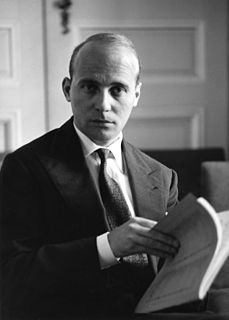 W
WHans Werner Henze was a German composer. His large oeuvre of works is extremely varied in style, having been influenced by serialism, atonality, Stravinsky, Italian music, Arabic music and jazz, as well as traditional schools of German composition. In particular, his stage works reflect "his consistent cultivation of music for the theatre throughout his life".
 W
WMatthäus Hetzenauer was an Austrian sniper in the Wehrmacht of Nazi Germany during World War II. He served in the 3rd Mountain Division on the Eastern Front of World War II, and was credited with 345 kills. His longest confirmed kill was reported at 1,100 meters. Hetzenauer received the Knight's Cross of the Iron Cross on 17 April 1945.
 W
WHeinrich "Heinz" Hitler was the son of Alois Hitler, Jr. and his second wife Hedwig Heidemann. He was also a nephew of Adolf Hitler, who reportedly called Heinz his favorite nephew.
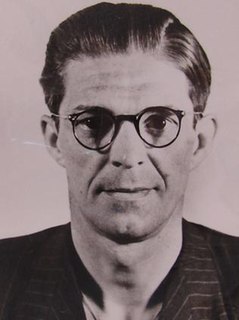 W
WJosef Jakobs was a German spy and the last person to be executed at the Tower of London. He was captured shortly after parachuting into the United Kingdom during the Second World War. Convicted of espionage under the Treachery Act 1940, Jakobs was shot by a military firing squad. He was not hanged because he was captured as an enemy combatant.
 W
WOtto Kandler was a German botanist and microbiologist. Until his retirement in 1986 he was professor of botany at the Ludwig Maximilian University of Munich.
 W
WKurt Knispel was a German tank commander during World War II, notable for claiming 168 tanks destroyed, making him the most successful fighter in armored warfare.
 W
WAugust Landmesser was a worker at the Blohm+Voss shipyard in Hamburg, Germany. He became known as the possible identity of a man appearing in a 1936 photograph, conspicuously refusing to perform the Nazi salute with the other workers. Landmesser had run afoul of the Nazi Party over his unlawful relationship with Irma Eckler, a Jewish woman. Later he was imprisoned, and eventually he was drafted into penal military service, where he was killed in action.
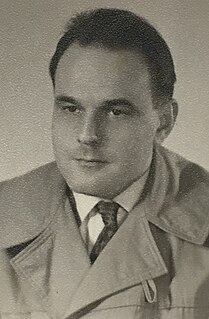 W
WGert Ledig, full name Robert Gerhard Ledig, was a German writer.
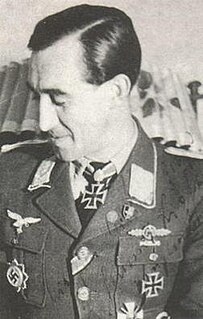 W
WHelmut Lipfert was a German Luftwaffe fighter ace and recipient of Knight's Cross of the Iron Cross with Oak Leaves. Lipfert ranks as the world's thirteenth fighter ace. Lipfert was credited with 203 victories achieved in 687 combat missions. All his victories were claimed over the Eastern Front and included a P-51 Mustang, 41 Yakovlev Yak-1, 41 Yakovlev Yak-9 fighters, two four-engine bombers and 39 Ilyushin Il-2 ground-attack aircraft. He was shot down fifteen times, without being injured.
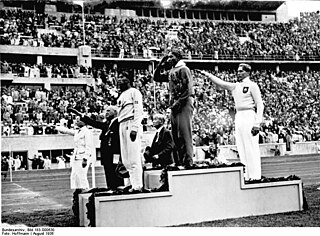 W
WCarl Ludwig "Luz" Long was a German Olympic long jumper, notable for winning the silver medal in the event at the 1936 Summer Olympics in Berlin and for giving technical advice to his competitor, Jesse Owens, who went on to win the gold medal for the long jump. Luz Long won the German long jump championship six times in 1933, 1934, 1936, 1937, 1938, and 1939.
 W
WGeorg Felix Ritter von Metaxa was an Austrian tennis player active in the 1930s.
 W
WJakob Hudson Nacken or Jacob Nacken was a German circus performer active in Europe and the United States. He began his career as an exceptionally tall person while a teenager, performing in a traveling circus, and appeared in the 1939 New York World's Fair. Nacken was the tallest soldier in the German Army during World War II at a height of seven feet three inches (2.21 m). He was employed as a giant Santa Claus and appeared on American television as a figure of high stature and in freak shows as the World's Tallest Man.
 W
WHans Rietz was an East German politician who became a top official in the country's Democratic Farmers' Party , which was one of five so-called bloc parties controlled by the ruling Socialist Unity Party . For many years Rietz served as a member of the National parliament ("Volkskammer") and he was also a long-standing deputy chairman of the State Council.
 W
WKarl-Heinz Rosch was a German soldier during World War II who saved the lives of two Dutch children.
 W
WFritz Paul Schmenkel was a German communist and resistance fighter against Nazism, who fought with the Soviet partisans in German-occupied Byelorussia during World War II.
 W
WAnton Schmid was an Austrian recruit in the Wehrmacht who saved Jews during the Holocaust in Lithuania. A devout but apolitical Roman Catholic and an electrician by profession, Schmid was conscripted into the Austro-Hungarian Army during World War I and later into the Wehrmacht during World War II. Put in charge of an office to return stranded German soldiers to their units in late August 1941, he began to help Jews after being approached by two pleading for his intercession. Schmid hid Jews in his apartment, obtained work permits to save Jews from the Ponary massacre, transferred Jews in Wehrmacht trucks to safer locations, and aided the Vilna Ghetto underground. It is estimated that he saved as many as 300 Jews before his arrest in January 1942. He was executed on 13 April.
 W
WAlexander Schmorell was a Russian-German student at Munich University who, with five others, formed a resistance group known as White Rose which was active against the Nazi German regime from June 1942 to February 1943. In 2012, he was glorified as a saint and passion bearer by the Russian Orthodox Church Outside Russia.
 W
WWolfdietrich Schnurre was a German writer. Best known for his short stories, he also wrote tales, diaries, poems, radio plays, and children's books. Born in Frankfurt am Main, and later raised in Berlin-Weißensee, he grew up in a lower-middle class family and did not receive a post-secondary education. He served in the Nazi Germany's army from 1939 until 1945, when he escaped from a prisoner camp after having been arrested for desertion. He was briefly imprisoned by British troops; after his release he returned to Germany in 1946 and began to write commercially.
 W
WHans Fritz Scholl was, along with Alexander Schmorell, one of the two founding members of the White Rose resistance movement in Nazi Germany. The principal author of the resistance movement's literature, he was found guilty of high treason for distributing anti-Nazi material and was executed by the Nazi regime in 1943 during World War II.
 W
WAlfred Schwarzmann was a German Olympic gymnast. He won three gold and two bronze medals at the 1936 Berlin Olympics and another silver medal at the 1952 Summer Olympics. During World War II, Schwarzmann served in the Wehrmacht and was a recipient of the Knight's Cross of the Iron Cross of Nazi Germany.
 W
WHorst Stechbarth was an East German politician and high-ranking military officer in the National People's Army, holding the rank of Army General (Armeegeneral). He was the Chief of the NVA's Landstreitkräfte and the ex officio Deputy Minister of Defense of the GDR. He was also a member of the Politbüro of the Central Committee of the ruling Socialist Unity Party of Germany (SED).
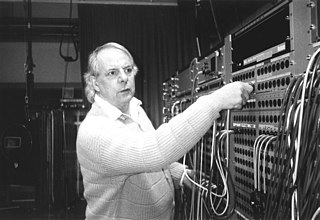 W
WKarlheinz Stockhausen was a German composer, widely acknowledged by critics as one of the most important but also controversial composers of the 20th and early 21st centuries. He is known for his groundbreaking work in electronic music, for introducing controlled chance into serial composition, and for musical spatialization.
 W
WWilhelm Stoph was a German politician. He served as Chairman of the Council of Ministers of the German Democratic Republic from 1964 to 1973, and again from 1976 until 1989. He also served as chairman of the State Council from 1973 to 1976.
 W
WBruno Sutkus was a Lithuanian-German sniper in the 68th Infantry Division of the German Army, on the Eastern Front of World War II, and was credited with 209 kills. Every kill was recorded in an individual "sniper's book" and had to be confirmed by at least one observer and authenticated by the battalion commander. Facsimile copies of various diary pages are reproduced in Sutkus' memoir. After the dissolution of the Soviet Union, Sutkus held lectures for Lithuanian soldiers and presented his wartime records to Lithuanian officers.
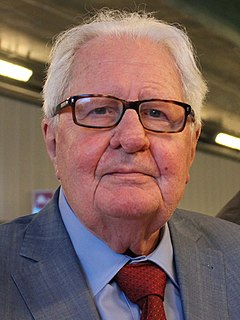 W
WHans-Jochen Vogel was a German lawyer and a politician for the Social Democratic Party (SPD). He served as Mayor of Munich from 1960 to 1972, winning the 1972 Summer Olympics for the city and Governing Mayor of West Berlin in 1981, the only German ever to lead two cities with a million+ inhabitants. He was Federal Minister of Regional Planning, Construction and Urban Development from 1972 to 1974, and Federal Minister of Justice from 1974 to 1981. He served as leader of the SPD in the Bundestag from 1983 to 1991, and as Leader of the Social Democratic Party from 1987 to 1991. In 1993, he co-founded the organisation Gegen Vergessen – Für Demokratie. He was a member of the National Ethics Council of Germany from its beginning in 2001.
 W
WOskar Werner was an Austrian stage and cinema actor whose prominent roles include two 1965 films, The Spy Who Came in from the Cold and Ship of Fools. Other notable films include Decision Before Dawn (1951), Jules and Jim (1962), Fahrenheit 451 (1966), The Shoes of the Fisherman (1968) and Voyage of the Damned (1976).
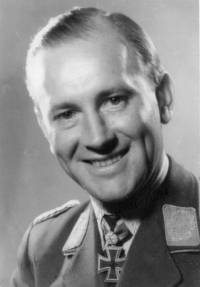 W
WJohannes Wiese was a German Luftwaffe pilot during World War II, a fighter ace credited with 133 enemy aircraft shot down in 480 combat missions. He claimed all of his victories over the Eastern Front, including over 50 Ilyushin Il-2 Shturmovik ground attack aircraft.
 W
WWolfgang Willrich was a German artist of the twentieth century, best known for his propaganda art during the time of Nazi Germany. From 1933 onwards, Willrich was employed by the Nazi government, for which he drew art depicting idealized racial standards and portraits of soldiers and party officials.
 W
WHeinrich Windelen was a German politician of the Christian Democratic Union. He served as a Member of the Bundestag from 1957 to 1990, and as Federal Minister for Displaced Persons, Refugees and War Victims in the Cabinet Kiesinger in 1969 and as Federal Minister of Intra-German Relations in the Cabinet Kohl II from 1983 to 1987.